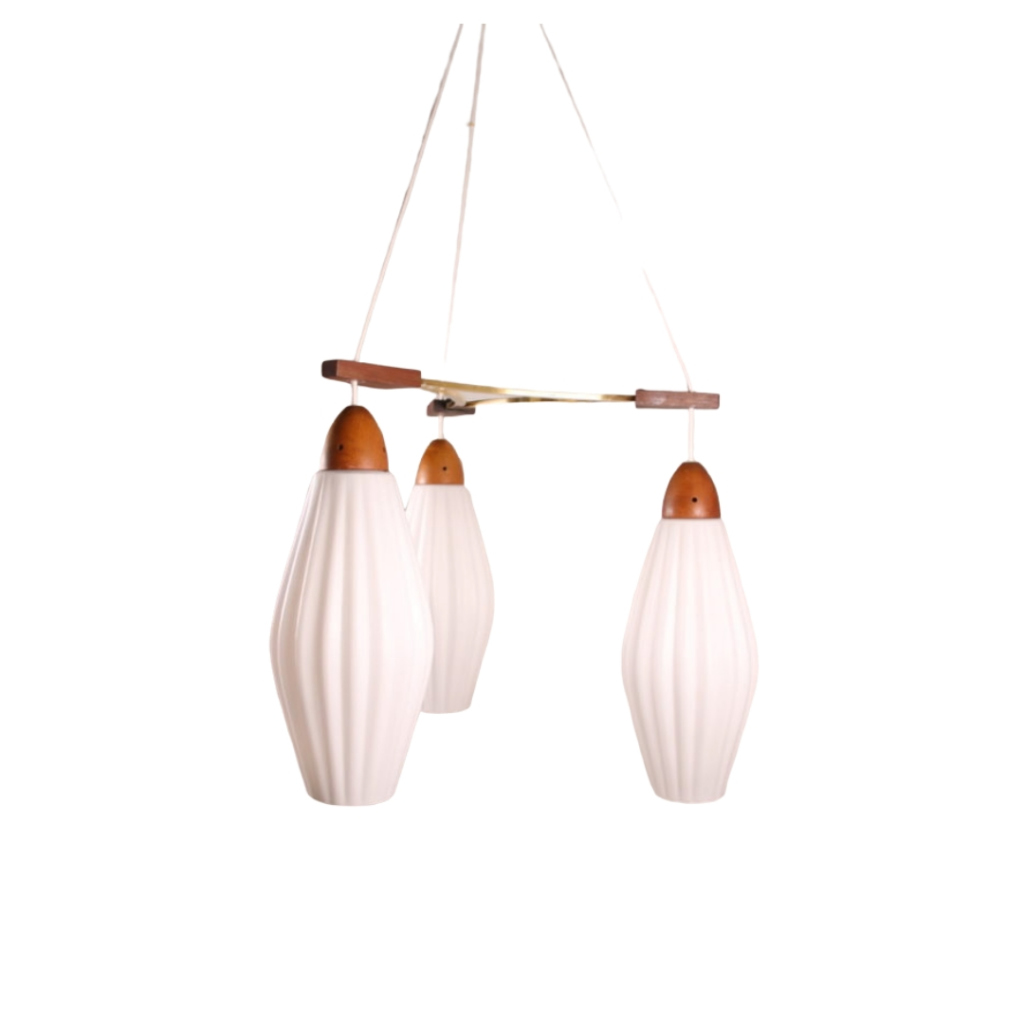I'm not particularly well-versed in architecture, the reference to Mies' Farnsworth House, in another thread, inspired me to start googling.
Some sites date Farnsworth House at 1951, since that was the completion date. I then googled Philip Johnson's Glass House, completed in 1949. Incredulous, I then double-checked Farnsworth House-- actually designed in 1945, but not completed until '51.
I then started wondering if Philip Johnson had much talent beyond self-promotion. Seems I frequently encounter passages (in books on design) which ridicule him. (Example, from Stephen Bayley, in a photo caption of the Glass House: "Philip Johnson, a wealthy socialite, became the leading US architect in post-war years. Like Betjeman in England, he opportunistically supported modernism as long as it was elitist. His own summer house was a tour de force of inspired plagiarism, built in the chic community of New Canaan. Johnson later repudiated the style that made him famous".)
As for myself, I'm none too impressed by the Johnson buildings in my backyard-- the AT&T Headquarters, and the "Lipstick" building. Additional googling of Johnson's work makes me wonder-- is Philip Johnson's reputation deserved?
great questions! I don't...
great questions! I don't know a lot about Johnson but you can turn the criticism on its head by saying he was a great facilitator and given that in the US state sponsorship of the arts isn't so generous as elsewhere private patronage is very important.
His glass house was quite different to Farnsworth, Craig Ellwood was a bit more slavish to Mies and Johnson could have built a very similar building but he didn't, he did understand that his site had context.
His po mo work? Maybe he was laughing up his sleeve, I'm not sure.
great question as i have ...
great question as i have asked my self that many times
I became aware of Johnson in the early 70s when he was doing magic to the Houston skyline,
i always thought of him as a master promoter but in the latter years i really started to understand his work.
The answer yes he was one of the greatest architects of the 20 century he took the international design of mies and refined it. The buildings he did in Houston alone were wonderful.
His Glass House
in New Cannan Connecticut. Absolutely sublime. Of course this type of structure works best when surrounded by 38 plus acres of woodlands and meadows, assuring ones privacy. The property actually acts as the exterior walls. Limited tours are available and would highly recommend.
Off topic...
But I came up with this when I googled the above-mentioned Craig Ellwood, and thought I'd share.
What a pleasant-looking house.
http://www.signonsandiego.com/uniontrib/20060903/news_mz1hs03moder.html
What's not to like?
Great modern furniture, natural setting. But, are we impressed by the architecture?
http://www.apartmenttherapy.com/ny/house-tours/house-tour-video-philip-j...
The Seagrams building and the AT&T building
are damn nice.
The AT&T is the building from the 1980's that looks like a Grandfather clock on top. It's funky and definately post modern, but I've stood right outside it (it's now the Sony Building) and it's beautiful.
The Seagrams building is often considered the world's first modern glass skyscraper.
In Minneapolis (my home town) the IDS building is pretty swell too, although it's a bit too big for its space.
All in all, Johnson was a major giant in modern skyscrapers and the same way that Frank Lloyd Wright was to the Prairie style.
I've not seem Mies...
I've not seem Mies uncomfortable with brick. Awfully stunning structures in
their simplicity, the Krefeld Villas.
" Such has been the fate, however, of Mies's Krefeld Villas, a pair of neighboring brick residences of typically restrained elegance built from 1927 to 1930. Their anonymity is, to some degree, Mies's own doing; in 1959, in his only public comment about the projects, he quipped that he would have preferred to use more glass, but the clients objected. "I had great trouble," he said...."
-from Kent Kleinman's, Mies Van Der Rohe's Krefeld Villas
http://www.chapters.indigo.ca/books/Mies-Van-Der-Rohes-Krefeld-Kent-Klei...
On Johnson...
Architects of note, in any movement, I suppose break into three types: those who get it, but aren't very good at it; those who get it and are very skilled and good at it; and those who get it and are virtuousos at it.
The "it" here is the movement, its philosophy, and the potentialities of its form language in application to solving the simultaneously timeless, but also highly localized purposes and problems of architecture.
Johnson falls into the category of very skilled and good at it.
That he "got" modernism is indisputable. He worked fluently with its form language repeatedly and built a lot of good looking, functional lesser known buildings, buildings which could in fact easily escape being branded being by Johnson at all. They were simply good modern architecture of the kind one might have hoped for had the best aspects of modern architecture proliferated.
But Johnson was oddly never able to design and build a building that was greater than the sum of its parts, or perhaps it would be more accurate to say greater than the defining "down the road graphic" of one of his works. Automobile designer Tom Gale coined the phrase "down the road graphic" to refer to a feature of a car that stood out even from a distance and defined it. Mercedes Benz's old radiator grill was a down the road graphic. BMW's double kidney grill is another.
His best known buildings are "best known" for a visual feature, not for there entirety.
Pt. 2...
Johnson's Glass House is known for its glass curtain walls; that he executed it so rightly still does not transcend the glass walls. The landscape architecture is terrific, but another issue for here I am only addressing his skill as an architect of buildings. No one looks at the Glass House and says, "Wow, did this guy solve the problem of interior space programming, or what?" No one considers the Glass House a ground breaking tour de force of altering the cost-benefit model of housing. No one really even looks at the Glass House as an iconic form, because it isn't. Its massing is in fact rather conventional to the eye. I've seen a million ranches before and after it with building foot prints and wall heights not that disimilar. Even the landscaping that is so beautifully done (at least in its maturity) could just as effectively serve a Wright Prairie Style house, or a McMansion, or a California tract Ranch for that matter. Its the glass, stupid. And maybe a bit of the exposed frame. Man, isn't that unusual. And it sure as heck is, even to this day. But the glass, finally, is a down the road graphic and not an extraordinarily brilliant design solution either from a functional, or aesthetic stand point. Why? Because functionally, glass houses have some serious short comings that are obvious. And aesthetically speaking, one's eye can never quite resolve the dichotomy between the highly transparent glass and the dark frame. The Glass House never becomes an unity, except when it is photographed at a time of day, or at a shutter speed, which obscures the dichotomy between glass and the frame. Great architecture achieves formal unities IMHO. Johnson seems to me a brilliant, but ultimately divided man who was very interested in exploring and portraying division. I can respect his intellect for exploring the divisions and dichotomies of life. Manicheanism has a long tradition that did not start with Descartes' mind body duality, if you know what I mean here. But back to Johnson's buildings
The towers in Houston are distinguished by their beveled tops and are, frankly, otherwise undistinguished from other glass boxes.
And even when he tried on the PoMo smoking jacket late in life and yielded the AT&T building, another of his attention getters, we find a cornice overwhelming an otherwise orthodox modern tower with a few tips of the hat to PoMo revivalism and a little tongue-in-cheeky chifarobe metaphor. The AT&T Tower is nothing if not an exercise in down the road graphics. The cornice will always be more important than the building, even though, as usual, Johnson works very skillfully in his chosen form language.
If you need any help, please contact us at – info@designaddict.com









